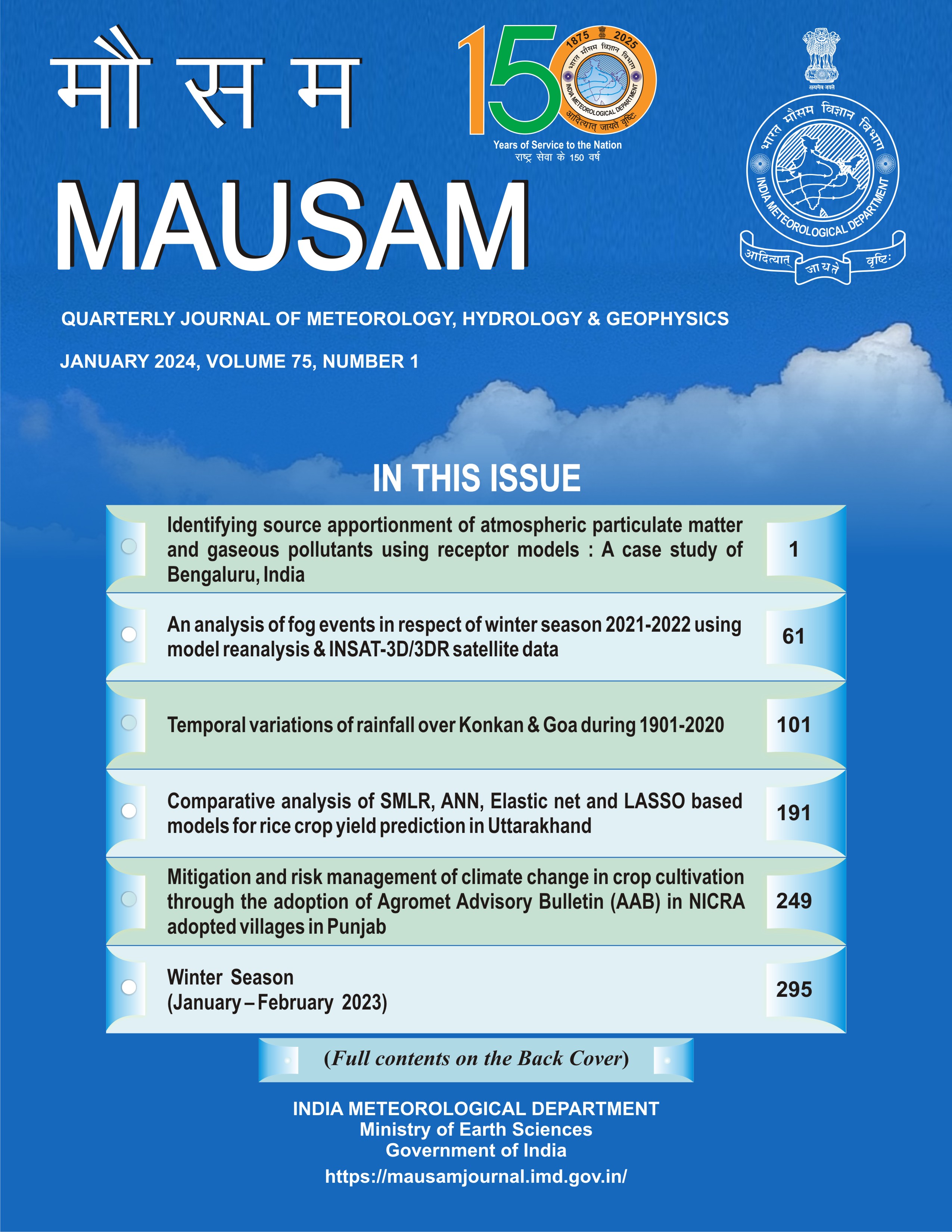A satellite bioclimatology of Baluchistan in Southwestern Asia
DOI:
https://doi.org/10.54302/mausam.v75i1.3573Abstract
.The present study aimed at investigating the relationship between two variables of temperature and precipitation with vegetation dynamics in one of the arid and semi-arid regions of the world, i.e. Baluchistan in Southwestern Asia, which is shared by the three countries of Iran, Pakistan and Afghanistan. In order to achieve the objectives, two different databases were used: 1. MODIS NDVI 16-day composite products (MOD13A3) of Terra satellite, with 1*1 km spatial resolution, which was obtained for a 17-year period (2000-2016) from the Earth Observing System (EOS) Data Gateway of the National Aeronautics and Space Administration (NASA); 2. Gridded monthly temperature and precipitation data was obtained for the same 17-year period from the Climate Research Unit (CRU) of the University of East Anglia. The Pearson product-moment correlation coefficient was also used to examine the relationship between vegetation dynamics and two climate variables of temperature and precipitation simultaneously as well as in three time lags i.e.; one month, two months and three months. The results of the analysis of a correlation between the mean temperature and monthly NDVI in different time lags indicated that in the humid and semi-humid regions in the northern half of Baluchistan, NDVI simultaneously reacted to temperature variations, while in the arid and semi-arid regions in the southern half of Baluchistan, NDVI had a one-month time lag with temperature. However, the results of the analysis of a correlation between precipitation and monthly NDVI in different time lags indicated that NDVI simultaneously reacted to precipitation variations, that is precipitation of each month had the greatest effect on the NDVI of the same month.
Downloads
Published
How to Cite
Issue
Section
License
Copyright (c) 2023 MAUSAM

This work is licensed under a Creative Commons Attribution-NonCommercial 4.0 International License.
All articles published by MAUSAM are licensed under the Creative Commons Attribution 4.0 International License. This permits anyone.
Anyone is free:
- To Share - to copy, distribute and transmit the work
- To Remix - to adapt the work.
Under the following conditions:
- Share - copy and redistribute the material in any medium or format
- Adapt - remix, transform, and build upon the material for any purpose, even
commercially.



